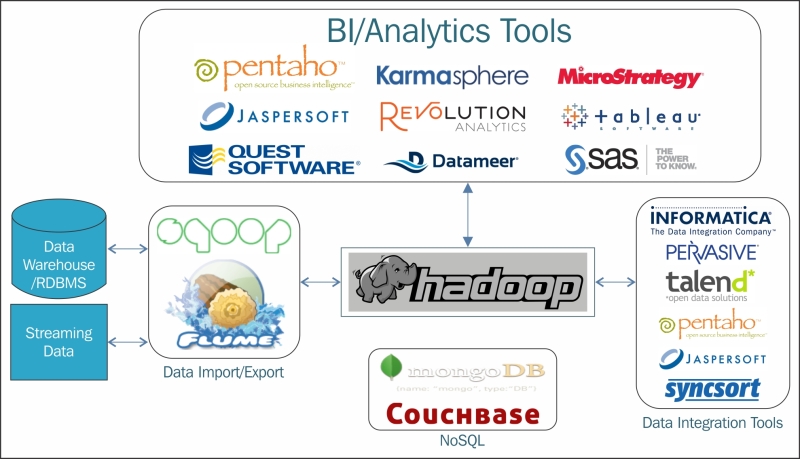Hadoop architecture is designed to be easily integrated with other systems. Integration is very important because although we can process the data efficiently in Hadoop, but we should also be able to send that result to another system to move the data to another level. Data has to be integrated with other systems to achieve interoperability and flexibility.
The following figure depicts the Hadoop system integrated with different systems and with some implemented tools for reference:

Hadoop Integration with other systems
Systems that are usually integrated with Hadoop are:
Data Integration tools such as, Sqoop, Flume, and others
NoSQL tools such as, Cassandra, MongoDB, Couchbase, and others
ETL tools such as, Pentaho, Informatica, Talend, and others
Visualization tools such as, Tableau, Sas, R, and others



